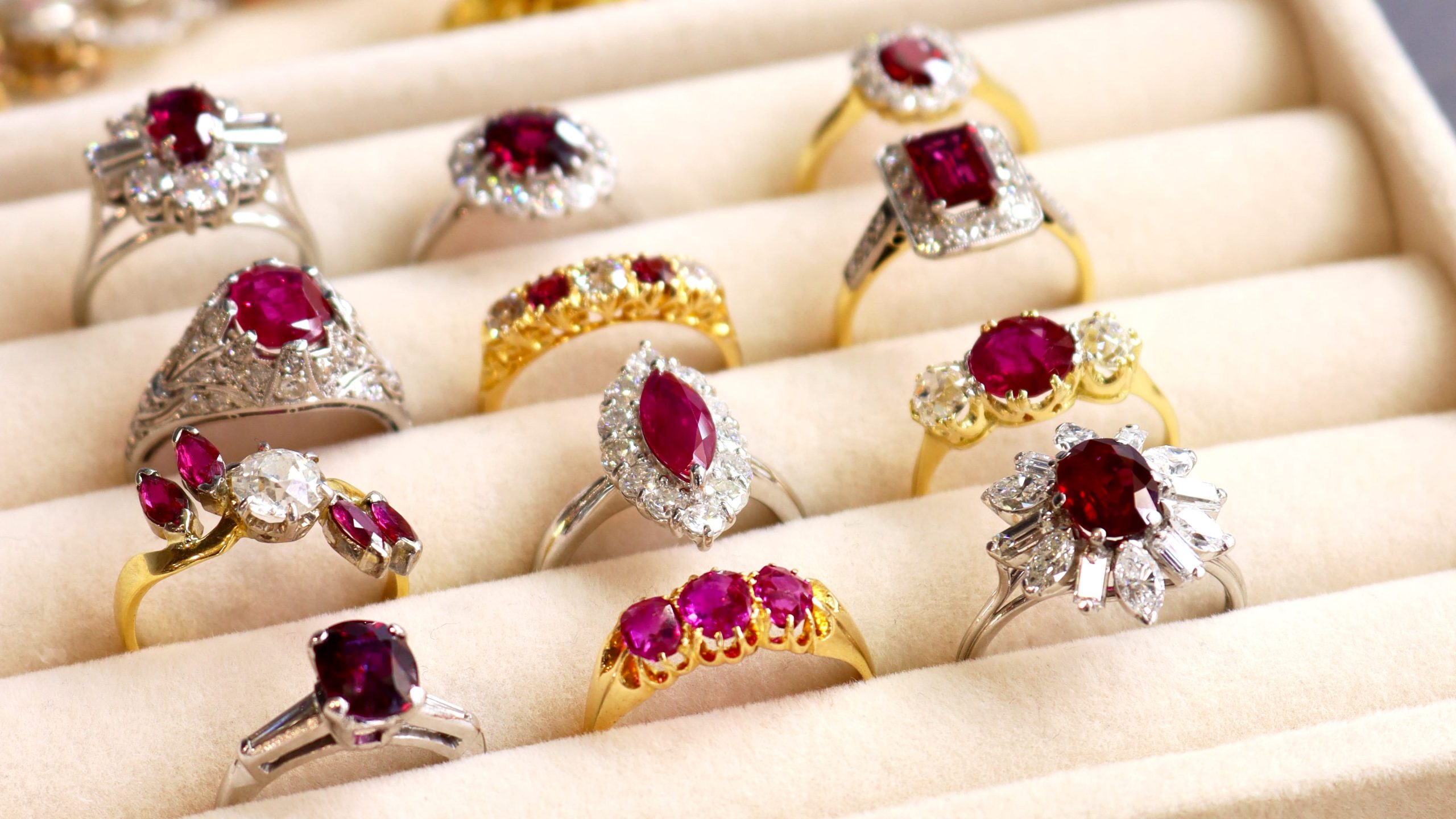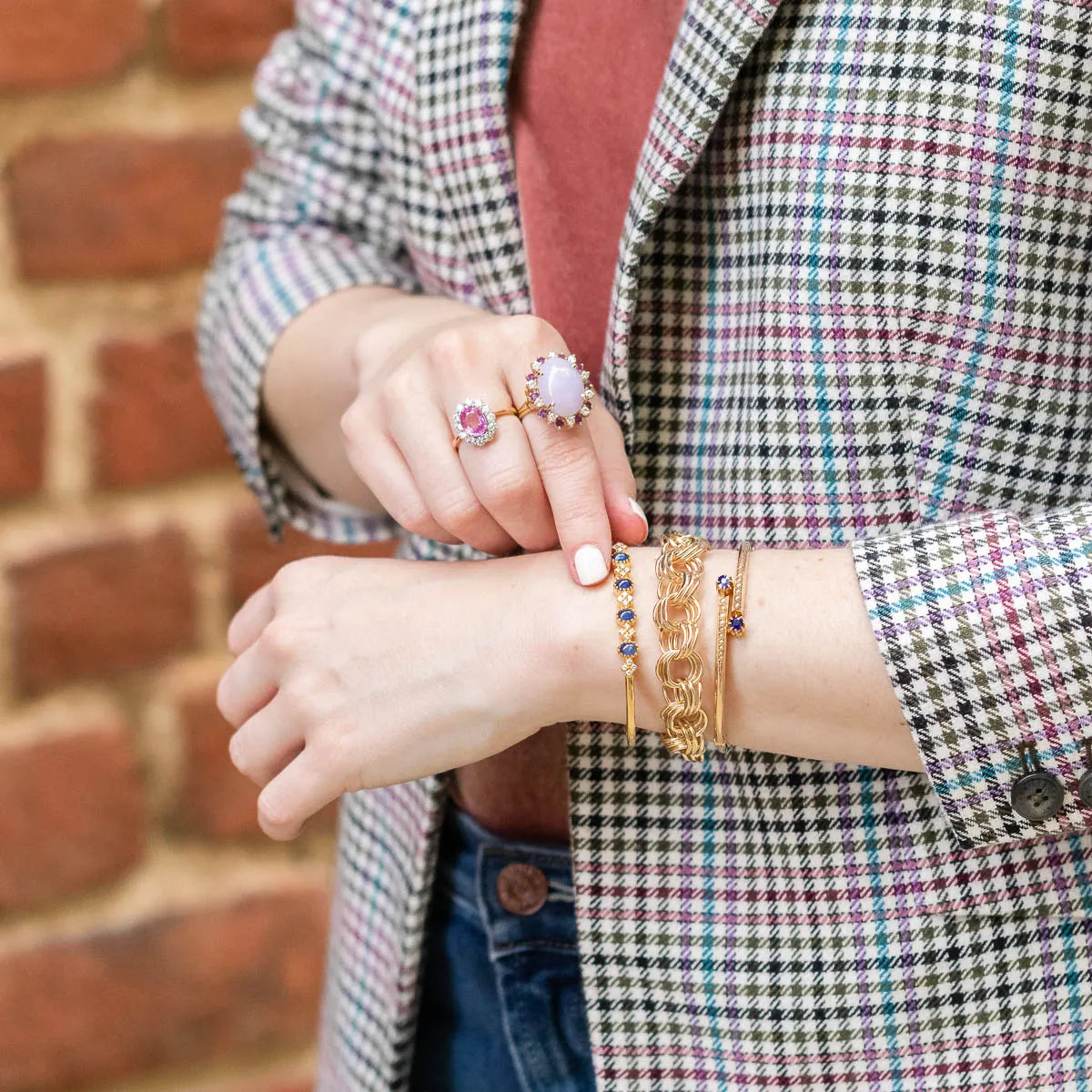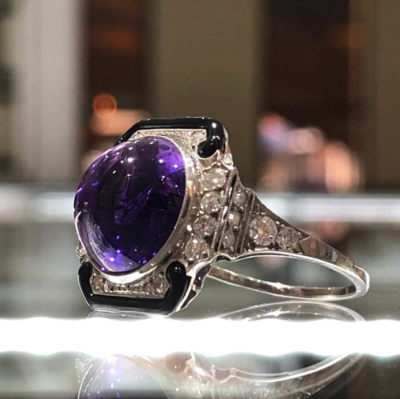Introducing the Rich History Behind Exquisite Estate Precious Jewelry Parts
The expedition of splendid estate jewelry pieces unveils a rich tapestry of background, showing the societal values and artistic movements of their time. From their beginnings as pens of wealth amongst the elite to their transformation into treasured family heirlooms, these things symbolize stories that go beyond generations. Each historic era presents distinctive design characteristics and cultural impacts that add to their appeal. As we examine the complex information and provenance of these items, one should think about the extensive tales they hold-- tales that might challenge our understanding of charm and relevance worldwide of jewelry.
The Beginnings of Estate Precious Jewelry
The origins of estate precious jewelry can be mapped back numerous centuries, mirroring an abundant tapestry of cultural and historical influences. At first, precious jewelry offered as a symbol of wealth and standing among aristocrats and nobility. As various people emerged, special designs and methods progressed, often intertwined with the practices and beliefs of their respective cultures.

As societies progressed, estate precious jewelry started to stand for greater than mere adornment; it came to be a kind of individual expression, with pieces typically passed down through generations. This transfer of possession imbued each thing with stories and memories, even more enhancing its worth. Hence, estate fashion jewelry includes a myriad of influences, enveloping the essence of human experience, artistry, and background, making it a considerable element of the jewelry globe today.

Notable Historical Periods
Throughout history, different ages have actually significantly influenced the style and relevance of estate precious jewelry. Each period came up with one-of-a-kind designs, materials, and cultural contexts that shaped the creativity of jewelry-making.
The Victorian age (1837-1901) noted an extensive change in precious jewelry design, identified by charming themes and elaborate workmanship. Throughout this time, precious jewelry often represented personal sentiment and was frequently utilized to commemorate considerable life occasions. The Art Nouveau activity (1890-1910) adhered to, highlighting natural forms and moving lines, drawing motivation from nature and the human number.
The Roaring Twenties advertised the Art Deco period (1920-1939), renowned for its geometric shapes, bold colors, and a sense of modernity. This period mirrored the exuberance of allure Age and the desire for high-end and luxury. Following The Second World War, the Mid-Century Modern period (1945-1960) embraced simplicity and capability, showcasing clean lines and cutting-edge products.
Each of these historical eras has actually left an indelible mark on estate jewelry, not only in regards to aesthetic charm but also in the means these pieces show the societal worths and technical developments of their time.
Iconic Design Features
Usually, famous design features of estate fashion jewelry reveal an abundant tapestry of social impacts and creative movements. estate jewelry near me. Each piece functions as a visual story, showcasing the stylistic preferences of its age and the craftsmens' mastery. For circumstances, the complex fretwork work typical in Victorian jewelry exemplifies the duration's fascination with nature and love, typically including themes such as blossoms and leaves.
The Art Nouveau activity introduced moving lines and natural forms, highlighting the beauty of natural environments. In comparison, the bold geometric patterns of Art Deco fashion jewelry mirror the modernist values of the 1920s, defined by proportion and a concentrate on straight from the source industrial materials.
In addition, the usage of vibrant gemstones and cutting-edge techniques, such as enameling and pavé settings, even more identifies these items. Shade palettes frequently represent certain social contexts, with particular stones symbolizing wealth or condition.
Famous Estate Fashion Jewelry Parts
Estate precious jewelry incorporates a selection of renowned items that have gone beyond time, each informing an one-of-a-kind tale of its beginning. Amongst these, the "Napoleon Ruby Pendant," originally crafted for Empress Josephine, exhibits luxury with its intricate layout and historical significance. An additional legendary item is the "Cartier Panther Bracelet," which showcases the iconic panther motif that has actually come to be identified with the Cartier name, mixing creativity with a strong statement.
The "Bulgari Serpenti" collection, with its sinuous, snake-inspired styles, has actually astounded enthusiasts given that the mid-20th century, signifying deluxe and appeal. Additionally, the "Maharaja Necklace," embellished with an exciting range of gemstones, reflects the majesty of Indian nobility and the rich cultural heritage connected with estate fashion jewelry.

The Worth of Provenance
Provenance plays a crucial role in identifying the value of estate fashion jewelry, as it supplies a recorded history that improves the piece's importance and charm. A product with a well-documented lineage commonly commands greater costs because of its association with popular figures, historical events, or artistic activities. Enthusiasts and financiers alike are drawn to pieces that tell a story, as these stories add layers of implying beyond mere looks.
The confirmation of provenance can include various forms of documents, such as initial acquisition invoices, assessments, and exhibition records. Furthermore, narrative histories passed down via households can contribute to the narrative, enhancing the allure of the fashion jewelry (estate jewelry near me). The more reliable and thorough the provenance, the most likely it is to stand out in the market
In addition, provenance can alleviate problems relating to authenticity; products with established backgrounds are much less most likely to be viewed as content recreations or counterfeits. By doing this, provenance not only elevates the inherent worth of estate precious jewelry but additionally safeguards the collection agency's financial investment. Eventually, an engaging provenance transforms an item from a simple object right into a valued artifact of background, making it a sought after enhancement to any collection.
Verdict
The exploration of estate fashion jewelry reveals an extensive connection between virtuosity and historical context. Each piece works as a testament to the craftsmanship and social influences of its time, showing the developing preferences and worths of society. The relevance of provenance more enhances the appeal of these prizes, transforming them into treasured antiques. Eventually, the abundant stories behind estate jewelry not only commemorate specific artistry but likewise envelop the more comprehensive tapestry of human history and social development.